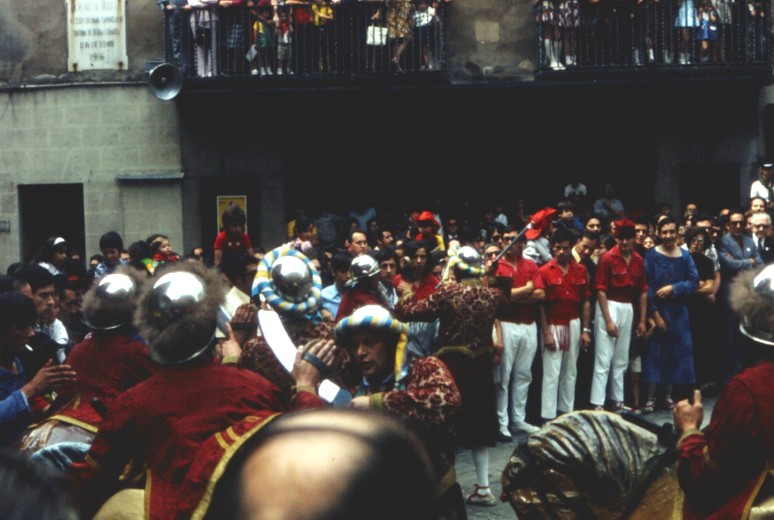Past to Present
In the thirteenth century Corpus Christi was originally celebrated by carrying the host in solemn procession. But in medieval Catalonia one small step separated life and theater. The posession of Christ's body after his triumphal entry into heaven inspired a much more joyous and imaginative celebration - giants, demons, angels and dragons were added. In most towns these elements were soon banned. In Berga they survived thru over 700 years of repetition.
Besides the religious aspects, thirteenth century Berguedans were also celebrating the end of 800 years of Arab occupation. It gave them pleasure to create a giant Moorish king and queen, get inside, lift them up, and make them dance. These are very heavy puppets indeed, each carried by one man and made to dance a very graceful and energetic dance. Berga has two sets of royalty - old ones and new ones. And two sets of nans, or "big-heads", representing the people.
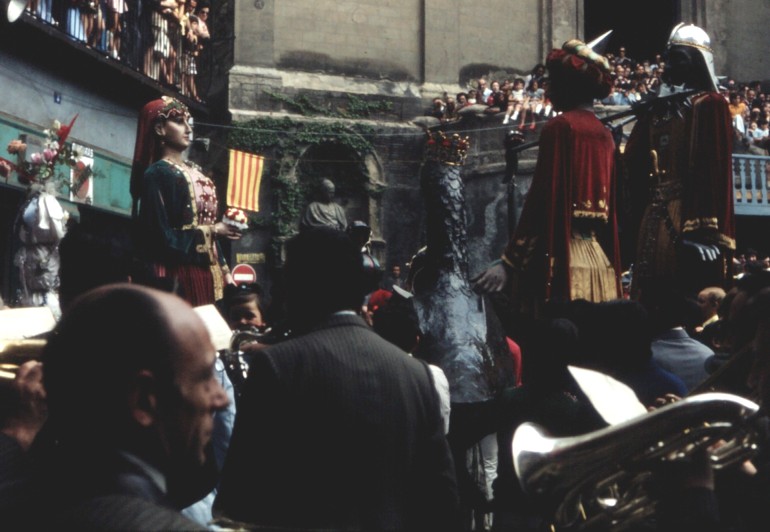
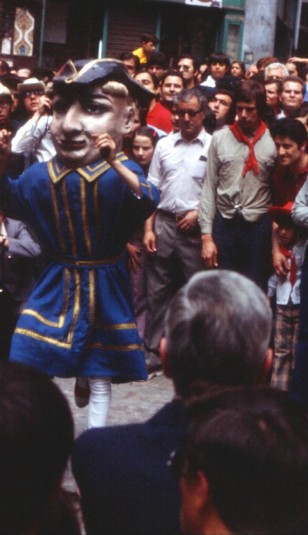
Between the eagle's dance of hope, usually performed with the sun at its zenith, and the equally exalted dance of the plens, where forty demons "full of fire" and many hundreds of participants boil their spirits, turning night into day, run a whole range of genuine human sentiments, as deeply rooted and as constant as our own life-giving tum, pa toom, pa toom...
Many towns have their aguila, but the Bergadans' special love for their aliga is reflected in the name change, unique in all Catalonia. It's dance has been compared to "an imprisoned princess hopefully embroidering the flag of her liberation", then breaking the chains and flying in the serene sky of liberty."
If you get too close to the action, beware of the heavy tail as the aliga spins at the end of the dance.
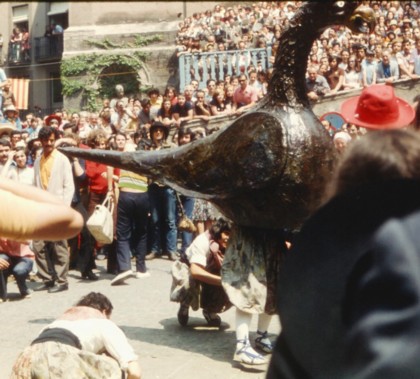
The maces don't dance - they "jump" (salten). They hop and skip up and down the plaza to the drumbeat of the tabaler till their firecrackers explode. The maces then fall to earth and two blond children, dressed as Saint Michael Archangel and another angel, finish them off with sword and spear. After this act the more earthly demons are taken care of.
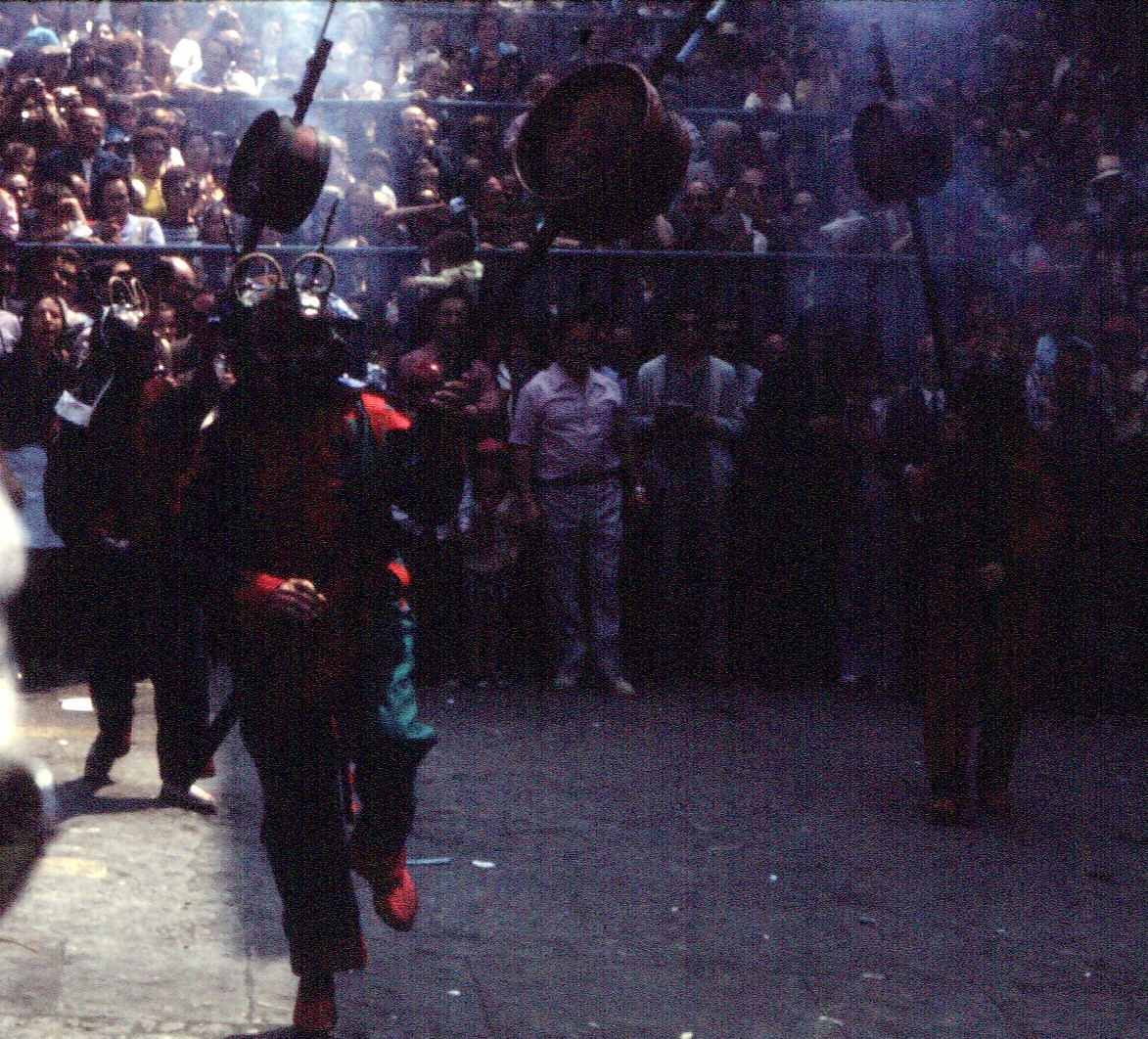
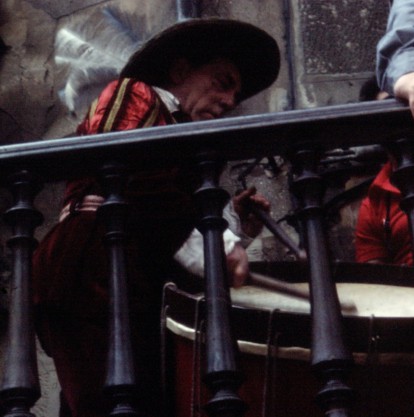
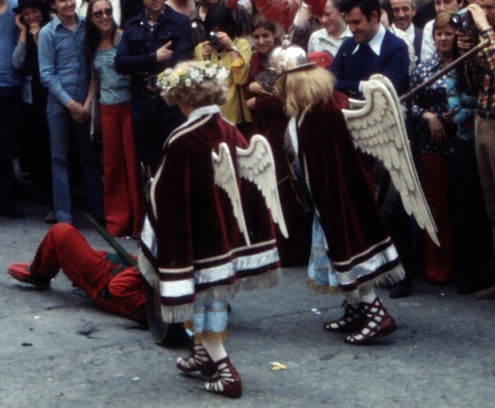
In the dance of the Turks and little horses the good guys are the Berguedans. They don't fight but simply shield themselves from the Turkish swordsmen who are afoot. This dance was once called Arabs and little goats. According to historian Manuel Riu it's a late 16th century version of an indigenous pre-christian ceremony in honor of the god of the flocks. Until the last century the horses also carried a doll symbolizing the legendary tribute of a hundred maidens.
